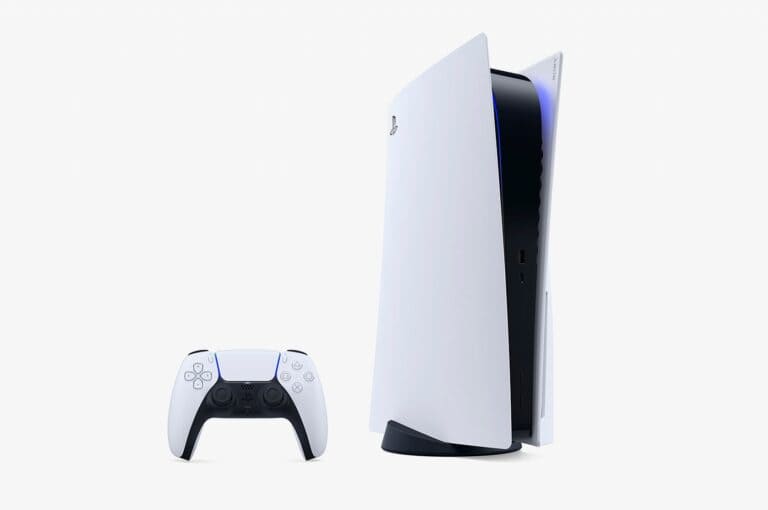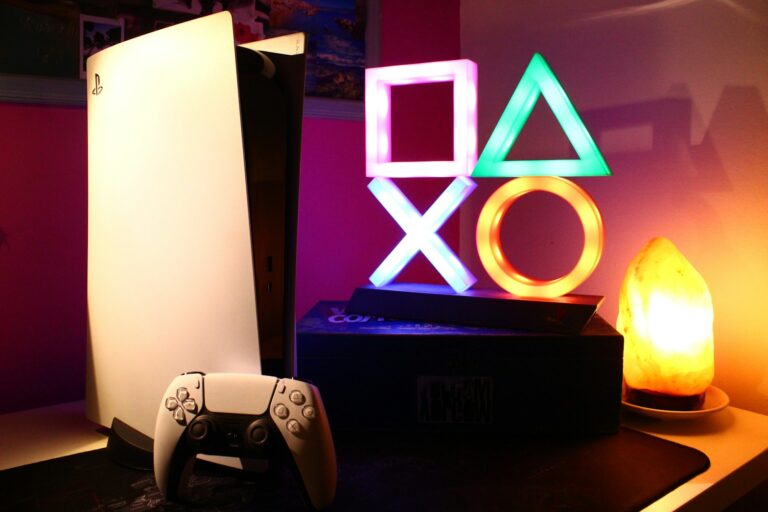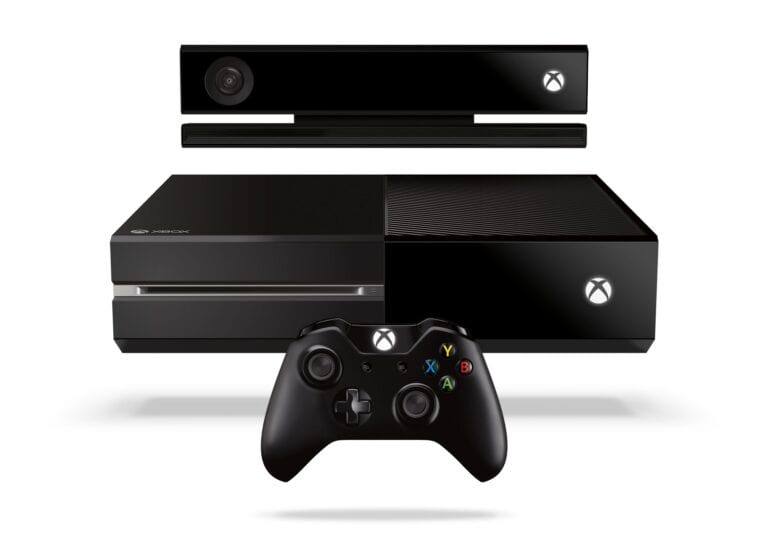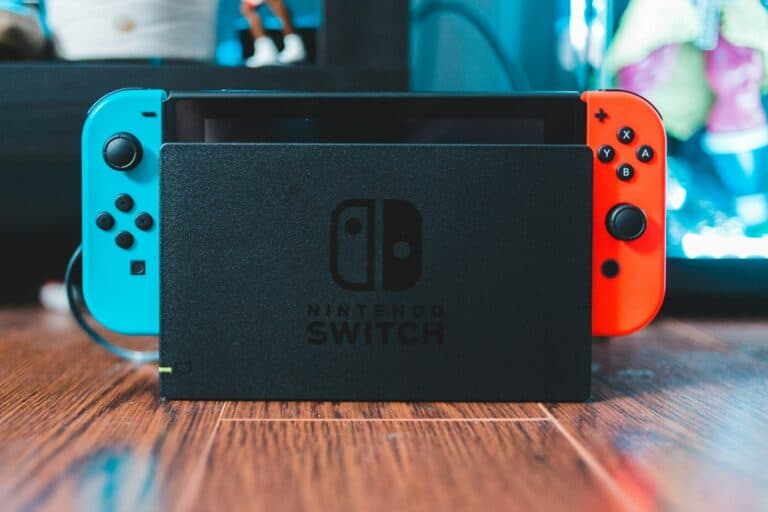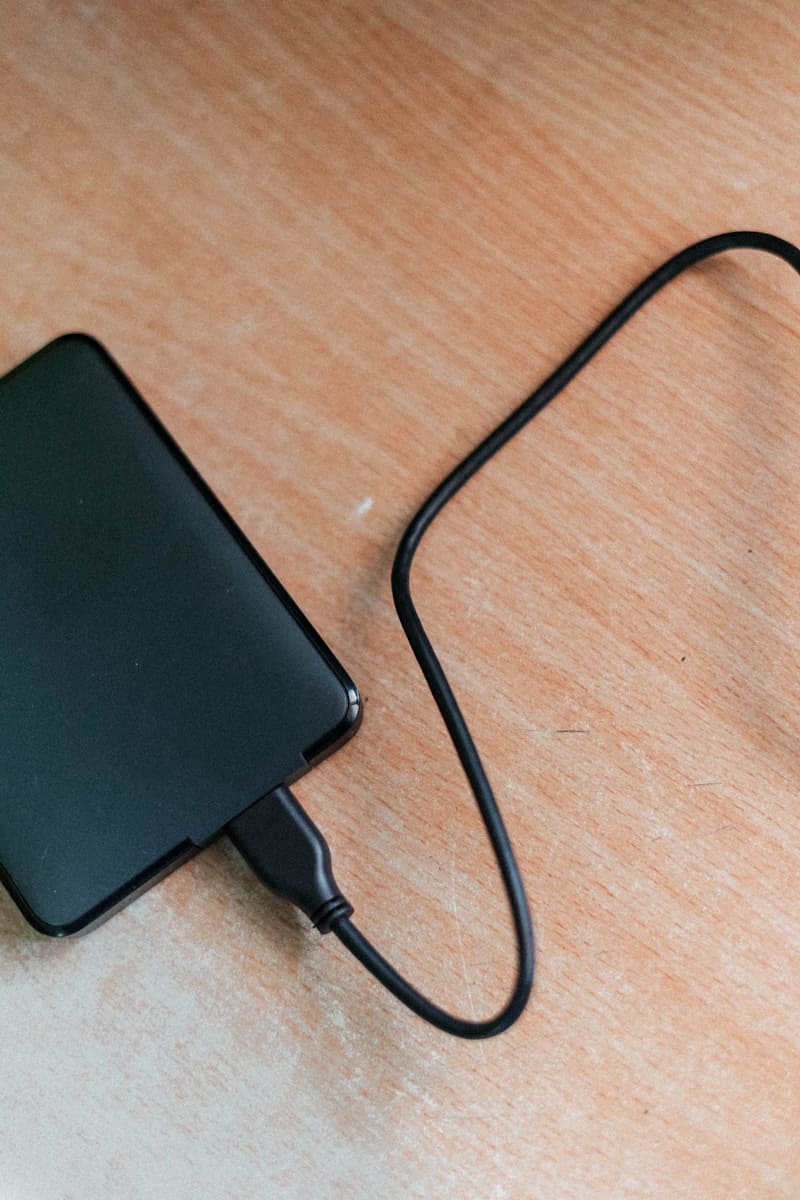
Having trouble with your Xbox external hard drive? It’s frustrating when your game storage suddenly stops working, especially in the middle of a gaming session. When your Xbox isn’t detecting your external storage, it could be due to several issues ranging from connection problems to drive failure.
You can fix most Xbox external hard drive issues by performing simple troubleshooting steps like restarting your console, checking cables, or reconnecting the drive. Start with a hard power cycle by holding down the power button on your Xbox until it fully shuts down, then disconnect and reconnect your drive. If that doesn’t work, try using a different USB port or cable to rule out connection problems.
Sometimes the issue might be more complex, requiring you to check if your external drive meets the Xbox system requirements or if the drive itself is corrupt. Connecting your drive to a computer can help determine if the problem is with the drive or your Xbox console.
Xbox External Hard Drive Not Working
External hard drives are a popular way to expand Xbox storage, but sometimes they stop being detected or fail to work properly. Here’s how to fix it.
1. Basic Checks
Before diving deep:
- ✅ Ensure the drive is USB 3.0 or faster (Xbox won’t recognize USB 2.0 drives for games).
- ✅ Check that the drive has at least 256 GB capacity.
- ✅ Make sure the drive is directly connected to the Xbox (avoid USB hubs).
- ✅ Try a different USB port on the console.
2. Restart & Power Cycle
- Hold the Xbox power button for 10 seconds → console shuts down.
- Unplug the power cable for 30–60 seconds.
- Plug everything back in and restart.
- Reconnect the external hard drive.
3. Check Drive Detection
- Press Xbox button → Profile & system → Settings → Devices & connections → Accessories / Storage.
- If the drive doesn’t appear, try connecting it to a PC to see if it’s recognized.
4. Reformat the Drive (⚠️ Erases all data)
If the drive shows up but doesn’t work:
- Go to Settings → System → Storage Devices.
- Select the external drive.
- Choose Format for Games & Apps.
- This erases everything and prepares it for Xbox use.
👉 If the drive is only for media (movies/music), format it as exFAT on a PC.
5. Update Your Xbox
Sometimes storage issues are caused by outdated system software.
- Go to Settings → System → Updates.
- Install any pending updates.
6. Check for Drive Errors on PC
- Connect the drive to a Windows PC.
- Open File Explorer → Right-click drive → Properties → Tools → Error Checking.
- Repair any detected issues.
7. Replace the USB Cable
Faulty or loose USB cables can cause detection issues. Try swapping with another compatible USB 3.0 cable.
8. Factory Reset Xbox (Last Resort)
If nothing else works:
- Go to Settings → System → Console info → Reset console.
- Choose Reset and keep my games & apps (to avoid redownloading everything).
- Reconnect the drive after reset.
9. When to Replace the Drive
If your drive:
- Makes clicking/grinding noises,
- Isn’t detected on PC either,
- Or repeatedly disconnects…
👉 It may have failed physically. In this case, replacement is the only option.
✅ Final Tips
- Always safely eject the drive before unplugging.
- Keep your Xbox in a cool, ventilated area to avoid overheating issues.
- Use powered external drives if you store a large game library.
⚡ In short: Start with simple fixes (ports, restarts, reformatting). If the drive still won’t work, test it on a PC—if it fails there too, it’s likely dead and needs replacing
Key Takeaways
- Restart your Xbox and reconnect your external drive as a first troubleshooting step.
- Check USB cables and ports for damage or try different ones to eliminate connection issues.
- Verify your drive works on a computer to determine if it’s corrupted or needs formatting.
Understanding Xbox Storage Options
Xbox consoles offer different storage options that help you expand gaming capacity beyond the internal drive. Both built-in and external storage solutions have specific requirements to work properly.
Xbox One and Xbox 360 Compatibility
External storage works differently across Xbox generations. Xbox One supports external hard drives for both game storage and gameplay, allowing you to run games directly from your external device.
Xbox 360 has more limited external storage compatibility. You can use external drives mainly for storing media and saved game data, but not for installing and playing games directly from them.
For Xbox One, you can connect multiple external drives simultaneously (up to three). This gives you flexibility to organize your game library across different storage devices.
Your Xbox will format the external drive specifically for gaming use, making it unusable on other devices until reformatted.
External Storage Requirements
For your external drive to work with Xbox, it must meet specific technical requirements. Xbox One needs a USB 3.0 compatible drive with at least 128GB capacity.
Drive connection type matters significantly. Your external storage must connect via USB 3.0 or higher for optimal performance. Older USB 2.0 drives won’t be recognized for game storage.
Speed is also critical for smooth gameplay. SSDs (Solid State Drives) provide faster loading times than traditional HDDs (Hard Disk Drives), though both are compatible.
Power supply is another consideration. Larger capacity drives typically need their own power source rather than drawing power through the USB connection.
Your external drive must be dedicated solely to Xbox use once formatted. The console will erase all existing data during setup.
Initial Troubleshooting Steps
When your Xbox external hard drive stops working, a few simple fixes can often resolve the issue without requiring technical expertise. Starting with basic troubleshooting can save you time and frustration before trying more complex solutions.
Checking Connection and Power Supply
First, make sure your external hard drive is properly connected to your Xbox. Inspect the USB cable for any visible damage like fraying or bending. These physical issues can prevent proper connection.
Try a different USB port on your Xbox. Sometimes specific ports can malfunction while others work perfectly. This simple switch often solves detection problems.
Perform a hard reset of your Xbox by holding the power button for 10 seconds until it completely shuts down. After waiting 30 seconds, reconnect your external drive and restart the console.
If your external drive has a separate power supply, check that it’s properly plugged in and the power light is on. Some larger drives require dedicated power to function correctly.
Try connecting the drive to a computer to see if it’s detected there. This helps determine if the issue is with the drive itself or your Xbox.
Ensuring Proper USB 3.0 Usage
Xbox consoles require external storage devices to use USB 3.0 technology. Check that your drive is USB 3.0 compatible – these ports and cables typically have blue inserts or SS (SuperSpeed) markings.
Make sure you’re using the original USB cable that came with your drive. Generic or low-quality cables may not provide proper data transfer rates needed for Xbox external storage.
Avoid using USB hubs or extension cables, as these can reduce power delivery and data transfer speeds. Connect your drive directly to the Xbox for best performance.
If your drive isn’t being recognized, check that it meets Xbox requirements: it must be 128GB or larger and support USB 3.0. Older USB 2.0 drives won’t work for game storage, though they might work for media.
Try removing and reconnecting the drive several times. Sometimes the connection needs multiple attempts to establish properly.
Advanced Diagnostics
When your Xbox can’t detect your external drive, you may need more in-depth diagnostic approaches. These tools help identify exactly what’s wrong with your drive and determine if it can be saved.
Using Disk Management Tools
If your Xbox isn’t recognizing your external hard drive, connect it to your PC for deeper analysis. Windows Disk Management is a powerful tool that can help diagnose drive issues.
To access it, right-click on the Start menu and select “Disk Management.” Look for your drive in the list – it might appear without a drive letter or show as “unallocated space.”
If the drive appears, but has no letter assigned, right-click it and select “Change Drive Letter and Paths” to assign one. This often solves detection problems.
You can also try Crystal Disk Info to check your drive’s SMART health status. This program reveals potential hardware failures that might explain why your Xbox can’t detect the drive.
Hard Drive Format Detection
Xbox systems require specific formats to recognize external drives. Your drive might be using an incompatible file system that your console can’t read.
When connected to a PC, check the drive’s current format in Disk Management or File Explorer. Xbox consoles support these formats:
- NTFS: Works for media storage but not for installing games
- exFAT: Compatible with large file sizes
- FAT32: Limited to 4GB file sizes but widely compatible
If your drive shows as RAW format, it indicates corruption. You’ll need to reformat the drive, which erases all data. Before doing this, try to recover important files if possible.
Remember that Xbox requires USB 3.0 drives with at least 128GB capacity for game installations. Smaller drives will only work for media storage.
Effective Solutions to Fix the Issue
When your Xbox external hard drive stops working, there are several troubleshooting methods that can resolve the problem. These solutions range from simple restarts to more advanced formatting techniques.
Performing a Hard Power Cycle on Xbox
A hard power cycle often resolves connection issues with external drives. To perform this:
- Unplug your external hard drive from the Xbox console
- Hold the power button on your Xbox for about 10 seconds until it fully shuts down
- Wait 30 seconds to allow the system to fully power down
- Reconnect your external drive to a USB port on your Xbox
- Power on your console
This process clears temporary system memory and refreshes hardware connections. Many users report this simple fix resolves detection problems without any data loss.
Formatting the External Hard Drive
If your Xbox still can’t detect your drive, formatting may be necessary. Before proceeding, try connecting the drive to a PC to check if it’s detected.
Warning: Formatting will erase all data on the drive. Back up important files if possible.
Steps to format:
- Connect the drive to your Xbox
- Go to Settings > System > Storage
- Select your external drive
- Choose Format storage device
- Follow the on-screen instructions
Xbox requires drives to be formatted in NTFS or exFAT file systems. If the drive is corrupted, formatting creates a fresh file structure that Xbox can recognize.
Resetting the Xbox Console
When other solutions fail, a system reset might fix external storage issues. You have two reset options:
Reset and keep my games & apps:
- Press the Xbox button on your controller
- Navigate to Profile & system > Settings > System > Console info
- Select Reset console
- Choose Reset and keep my games & apps
Factory reset (use only as a last resort):
- Follow the same path to Reset console
- Select Reset and remove everything
A reset rebuilds system files that manage external storage connections. The first option preserves your games and apps while fixing system issues.
Data Management and Recovery
When your Xbox external hard drive fails, protecting your game data becomes crucial. Good data management practices can prevent loss, while recovery tools can help rescue your files when problems occur.
Safeguarding Your Data
Regularly backing up your Xbox game data is essential. Connect your external hard drive to your PC and copy important game saves and content to another device as a precaution.
You should also use the Xbox cloud save feature whenever possible. This automatically stores your save data online and protects it from hardware failures.
When using a Seagate external hard drive or similar storage, avoid disconnecting it during data transfers. Always use the “Eject” option in the Xbox menu before unplugging to prevent corruption.
Consider partitioning your drive with tools like MiniTool Partition Wizard before using it with Xbox. This creates separate areas for games and media, reducing fragmentation and potential data issues.
Recovery Tools for Lost Data
If your games and saves vanish from your external drive, don’t panic. Several recovery options exist. First, try reconnecting your drive and restarting your Xbox. This simple fix often resolves detection issues.
For more serious problems, connect your external drive to a PC. Data recovery software can scan and restore lost files. Popular tools include:
- Recuva
- Disk Drill
- EaseUS Data Recovery
- Stellar Data Recovery
These programs can find and restore deleted or corrupted game data from your external drive.
If using a Seagate external hard drive, check if it comes with Seagate Rescue services. Some models include limited data recovery support from the manufacturer.
Remember that recovery success depends on how quickly you act. Continuing to use a failing drive may overwrite recoverable data.
Manufacturer Support and Warranty
When your Xbox external hard drive stops working, checking warranty status should be one of your first steps. Most external drives like Seagate External Hard Drives come with a standard warranty ranging from 1-3 years.
You can verify your Xbox warranty by signing into your Microsoft account and selecting Devices. Then choose your specific device to see its warranty status and service options.
For external hard drive manufacturers, you’ll need to:
- Locate your purchase receipt
- Find the serial number on the device
- Visit the manufacturer’s support website
- Register your product if you haven’t already
If your Seagate drive is malfunctioning and still under warranty, the company will likely replace it free of charge. Make sure you’ve tried all troubleshooting steps before contacting them.
For technical assistance without warranty coverage, services like JustAnswer provide expert help for a fee. They connect you with technicians who can diagnose complex issues when standard troubleshooting fails.
Remember that attempting to open or repair the drive yourself typically voids any warranty. Many manufacturers offer paid repair services for out-of-warranty products, but these can sometimes cost nearly as much as a replacement.
Always check if Microsoft’s warranty covers connected accessories. In some cases, damage to external devices caused by console issues might be covered under their service policy.
Long-Term Maintenance and Care
Keeping your Xbox external hard drive in good working condition requires regular maintenance. You should check the connections between your hard drive and console at least once a month to ensure they’re secure.
Power Management Tips
- Never unplug your external drive while the Xbox is running
- Always power down your console completely before disconnecting
- Consider using a surge protector to prevent power-related damage
- Power cycle your hard drive occasionally by unplugging it for 30 seconds
Dust can significantly impact your hard drive’s performance. Clean the area around your Xbox and external drive weekly using a microfiber cloth.
Operating System Maintenance
- Keep your Xbox system updated with the latest firmware
- Regularly check for driver updates for your external storage
- Restart your Xbox monthly to clear temporary system files
Temperature management is crucial for your external drive’s lifespan. Place your drive in a well-ventilated area and avoid stacking other devices on top of it.
You should perform a health check on your hard drive every few months. The Xbox storage menu can show you basic information about your drive’s status.
Back up critical game saves to the cloud when possible. This provides an extra layer of protection if your external drive experiences issues.
Frequently Asked Questions
External hard drive issues with Xbox consoles can be frustrating, but most problems have straightforward solutions. Here are answers to common questions about troubleshooting external storage problems on your Xbox.
How can I troubleshoot an unresponsive external hard drive on my Xbox Series X?
If your external hard drive isn’t responding on your Xbox Series X, try a hard reset of your console. Hold the power button until the console completely shuts down, then restart.
Try connecting your drive to a different USB port. Some ports might provide better power or connection stability than others.
Check if your drive meets the Xbox system requirements for external storage. The drive should be USB 3.0 or higher and have at least 128GB of storage.
What steps should I take if my Xbox Series S external hard drive is not detected?
First, unplug the external drive and reconnect it to ensure a proper connection. Sometimes the connection can become loose or unstable.
Try using a different USB cable as the original one might be damaged. Cable issues are a common culprit for detection problems.
If these steps don’t work, connect the drive to a PC to check if it’s recognized. This helps determine if the problem is with the drive itself or your Xbox Series S.
Why does my Seagate external hard drive show no light when connected to my Xbox?
No light on your Seagate drive usually indicates a power issue. Check if the USB port is providing enough power to the drive.
For drives with separate power adapters, ensure the power cable is securely connected and the outlet is working properly.
If you’ve verified power connections and the light still doesn’t come on, your drive may have internal damage or corruption. In this case, testing it on a computer can help confirm if repair is possible.
How do I fix an Xbox external hard drive that isn’t recognized by my PC?
If your PC doesn’t detect the drive, try updating the storage drivers on your computer. Outdated drivers often cause detection issues.
Check Disk Management on your PC to see if the drive appears but needs formatting. Remember that formatting will erase all data.
Try different USB ports or connecting to another computer. This helps determine if the problem is with your specific PC or the drive itself.
What is the proper method for resetting an external hard drive on Xbox consoles?
To reset an external drive, go to Settings > System > Storage on your Xbox. Select your external drive, then choose “Format storage device.”
Before formatting, remember to back up any important game data as formatting will erase everything on the drive.
For stubborn issues, you can format the drive on a PC using NTFS or exFAT file systems, then reconnect it to your Xbox.
What are the common solutions if my Xbox storage expansion card is not functioning?
Make sure the expansion card is properly inserted into the expansion slot. Even slight misalignment can prevent proper connection.
Try removing the card, waiting 30 seconds, and reinserting it. This simple reset can resolve many connection issues.
If your expansion card still isn’t working, check for system updates on your Xbox. Sometimes firmware updates are needed to properly recognize storage expansion cards.

